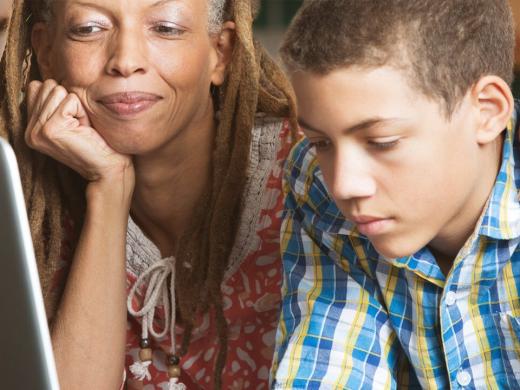Playing videogames is a popular activity, with 70 percent of youth under the age of 18 playing videogames. Some games are solitary or single-player games; others are multi-player. Multi-player games – whether they are played on a computer, game console, handheld system, smartphone, or tablet – allow users to play with people they know in person and others they meet online. In fact, 65% of video game players of all ages say they play with others. There are many types of videogames: role-playing games, action games, shooter games, sport games, and fighting games. There are also educational games like sandbox/build/construct games, puzzle games, and others.
Benefits of Online Gaming
Playing videogames can positively impact a players’ cognitive, emotional, and social skills. It can also help children and teens enhance their problem-solving and strategizing skills. Multi-player team games may help youth learn how to cooperate with others. Youth who play videogames may also improve their motor skills and creativity. Videogames also offer players a space to work out their emotions, and can boost a player’s mood and ease anxiety. Gaming can also be a place to make new friends and socialize.
Risks of Online Gaming
While gaming has the potential for positive benefits, it is also a place where cyberbullying can happen. If someone is not performing well in a game, other players may curse or make negative remarks that can turn into bullying, or even exclude the person from playing together.
Anonymity of players and the use of avatars allow users to create alter-egos or fictional versions of themselves, which is part of the fun of gaming. But it also allows users to harass, bully, and sometimes gang up on other players. When players are anonymous, it can be difficult to hold them accountable when they bully others and use the game as a tool of harassment. Some players may use the game as a means to harass others or to get their personal information, like usernames and passwords. They can even make others’ personal information available online through a tactic called “doxing.” Doxing can compromise not just a child’s information, but their parent’s information as well, and can make them targets of bullying and harassment.
Gamers often use online gaming communities and social media to connect with other players, learn tips and tricks, share strategies, create teams/guilds, and connect while they play or watch others play. These types of online communities are also a place where cybercriminals may seek to cause harm – for instance, by posting links that appear to be game-related but are truly computer viruses or malware (software designed to disrupt, damage or gain access to a computer) or where predators may seek access to children.
Prevent Cyberbullying for Gamers
Gaming can be a fun, safe and positive environment for all. Parents can help prevent cyberbullying of their children who play video games by:
- Playing the game with your child or observing the game to understand how it works and what a child is exposed to in the game.
- Checking in periodically with your child about who is online, playing the game with them.
- Knowing which gaming communities, social media, and apps your child uses while gaming and their security risks which you can research online.
- Helping your child set the privacy and security settings for their games and apps.
- Teaching children about safe digital behavior, including not clicking on links from strangers; not downloading bots (software for automated tasks) or clicking on links in gaming forums; not sharing personal information like emails, phone numbers, addresses, and passwords; not participating in bullying behavior of other players; and what to do if they observe or experience cyberbullying.
- Establishing rules about how much time a child can spend playing video games.
- Keeping an open line of communication about your child’s digital life.
There are things that gamers can do if they are experiencing cyberbullying or see it happen to others while gaming:
- Tell the player who is bullying to stop.
- Block the player who is bullying from the game and unfriend them on social media and in gaming communities.
- Report the player who is bullying to the game group, team, platform, community, or developers.
- Take a break from playing the game.
- Tell a parent or trusted adult and get some support.
-
How to Prevent Cyberbullying

This guide helps parents, caregivers, and youth learn ways to identify, prevent, and address cyberbullying.

